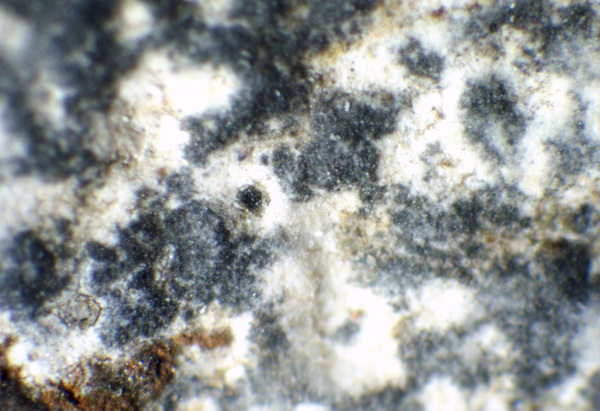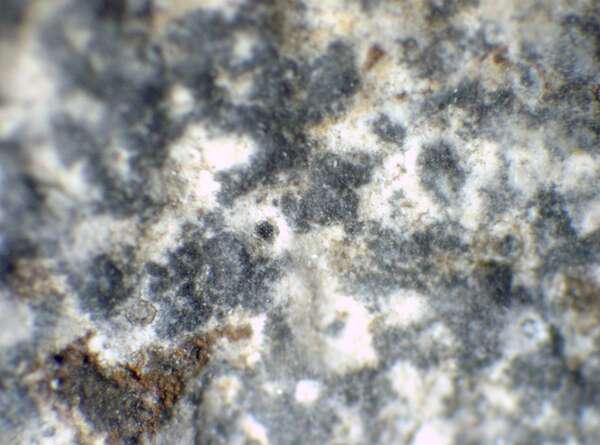Verrucaria attica (J. Steiner) J. Steiner
Verh. zool.-bot. Ges. Wien, 61: 39, 1911. Basionym: Verrucaria rupestris var. attica J. Steiner - Sitzungsber. K. Akad. Wiss., nath. naturwiss. Cl., 107: 177, 1898.
Synonyms:
Distribution: S - Si (Ottonello & Salone 1994, Grillo & al. 2007).
Description: Thallus crustose, endosubstratic, pale brown, smooth and continuous. Upper cortex (lithocortex) poorly developed; algal layer discontinuous, the photobiont cells in clusters; medulla prosoplectenchymatous, with oil cells (macrosphaeroids) in the lower part. Perithecia black, 0.3-0.4 mm across, completely immersed in the rock and leaving deep pits when they fall off. Involucrellum absent; exciple bottle-shaped to broadly pyriform, colourless except near the ostiole, where it tends to be thicker; hamathecium of periphyses in the ostiolar canal, and short periphysoids in the half upper part of the perithecial cavity; hymenial gel hemiamyloid, I+ red (I+ blue at very low concentrations of I), K/I+ blue. Asci 8-spored, clavate, I-, fissitunicate, the wall thickened above, with an ocular chamber, dehiscent by extrusion of an endotunica to form a delicate rostrum, Verrucaria-type. Ascospores 1-celled, hyaline, ellipsoid, 15-25 x 9-14 μm. Photobiont chlorococcoid. Spot tests: K-, C-, KC-, P-, UV-. Chemistry: without lichen substances.Note: a very poorly known species of calciferous rocks, with a few records from the eastern part of the Mediterranean Region. Ecological indicator values refer to the situation observed in Sicily (Marettimo Island).
Growth form: Crustose endolithic
Substrata: rocks
Photobiont: green algae other than Trentepohlia
Reproductive strategy: mainly sexual
Poorly known taxon in need of further study
Commonnes-rarity: (info)
Alpine belt: absent
Subalpine belt: absent
Oromediterranean belt: absent
Montane belt: absent
Submediterranean belt: absent
Padanian area: absent
Humid submediterranean belt: absent
Humid mediterranean belt: absent
Dry mediterranean belt: very rare

Predictive model
Herbarium samples
Growth form: Crustose endolithic
Substrata: rocks
Photobiont: green algae other than Trentepohlia
Reproductive strategy: mainly sexual
Poorly known taxon in need of further study
Commonnes-rarity: (info)
Alpine belt: absent
Subalpine belt: absent
Oromediterranean belt: absent
Montane belt: absent
Submediterranean belt: absent
Padanian area: absent
Humid submediterranean belt: absent
Humid mediterranean belt: absent
Dry mediterranean belt: very rare

Predictive model
| Herbarium samples |
 INDEX FUNGORUM
INDEX FUNGORUM
 GBIF
GBIF




